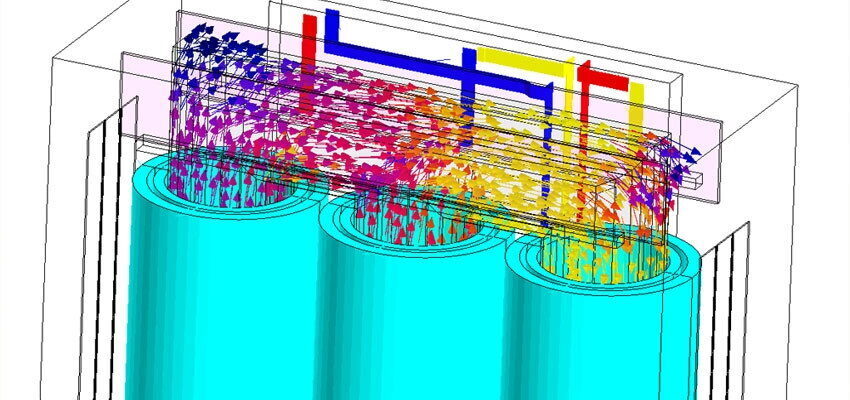
How to design power transformers efficiently?
Abstract Nowadays power transformers need to optimise their efficiency to ensure that a minimum amount of losses is generated by various physical phenomena. Finite element...
bySimon Guicheteau

Abstract
Nowadays power transformers need to optimise their efficiency to ensure that a minimum amount of losses is generated by various physical phenomena. Finite element studies allow transformer designers to accurately analyse various losses (Joule losses, iron losses, stray losses) in order to enhance transformer performance. There are a few steady state and transient tests which allow the assessment of electrical and mechanical constraints that a power transformer will have to endure during its life cycle. In addition, thermal analysis can complete these studies to detect and prevent hot spots on the tank or in the windings.
Keywords: finite element, modelling, electromagnetic, thermal, design, power transformer
1. Introduction
The fact that approximately 40 % of grid losses are dissipated by power transformers [1], even though their efficiency is around or above 90 %, has resulted in a great need to analyse these important components of the electrical network. A slight improvement in efficiency can save a lot of energy in the long life cycle of a transformer. Nowadays, every aspect of power transformer design can affect its efficiency, such as global losses, but also accurate local quantities like eddy currents in a specific part of the transformer. Indeed, losses in the windings or skin effect are very difficult to estimate with traditional analytical methods. Finite element analysis has become an essential tool for considering most aspects of a power transformer and optimising its behaviour. Some losses are still very difficult to measure experimentally and require an application of the simulation methods discussed in this article in order to be evaluated.
This article illustrates different tests used in steady-state and transient studies to characterise a power transformer, determine an equivalent circuit and design it so as to handle transient electrical and mechanical constraints. The article also gives insight into the thermal simulations that can complete the whole design of a power transformer.
2. Specific physical models for power transformers
There are some specific models which help transformer designers to represent all the complex phenomena occurring in their unit. In order to define every different condition applied to the power transformer, a circuit context embedded in the finite element part allows the modelling of power sources, switches, diodes, inductors, etc. Various coil conductors and solid conductors are also represented in the circuit context and are directly linked to the corresponding region in the 2D/3D model.
Another important aspect is the modelling of conductor regions. Homogeneous regions allow easier description of the windings characteristics (number of turns, material, filling factor, etc.). Some advanced models permit evaluation of the skin and proximity effects in the coils without representing each wire, which helps reduce the time and memory needed for the simulations and ensures accurate results.
Thanks to dedicated regions such as laminated region, a thin conducting and impedance surface, it is possible to model the skin effect in conductive parts (e.g. transformer tank, frames, shunt fastening) up to several MHz. For laminated materials, for instance, there is a specific region so that the designer does not need to represent and mesh every thin layer of this region: the anisotropy is considered during the model solving. In addition, a model of hysteresis can increase the accuracy of the iron losses computation and deal with remanence issues for transient aspects. In order to reduce the complexity of the tests, not all of these models were used for the illustrated simulations.
Finally, multi-parametric studies permit model solving directly and analysis of different configurations of geometry or different physical parameters, allowing consideration of various transformers.







